This ancient species of hippopotamus was an extinct herbivore that lived from the late Oligocene to the Miocene epoch.
As one of the largest semi-aquatic mammals still inhabiting our planet, hippopotamuses have always been considered fascinating creatures by researchers.
Their name derives from Greek, meaning “river horse.” Despite their appearance and to the surprise of many, hippopotamuses and whales are closely related through a common ancestor that existed about 54 million years ago.
Hippopotamuses were once widespread across Europe and Asia, but today they are only found in Africa. These massive animals prefer to spend time in rivers and grasslands where they can graze.
Hippopotamuses are believed to consume a significant amount of food to maintain their size; however, despite their intimidating appearance, they will not show aggression unless provoked.
In fact, the Earth once hosted extinct hippopotamus species that looked far more fearsome and were believed to be much more aggressive than the modern hippopotamus.
One such species is Desmostylus—a prehistoric hippopotamus with razor-sharp canine teeth that once roamed the Earth.
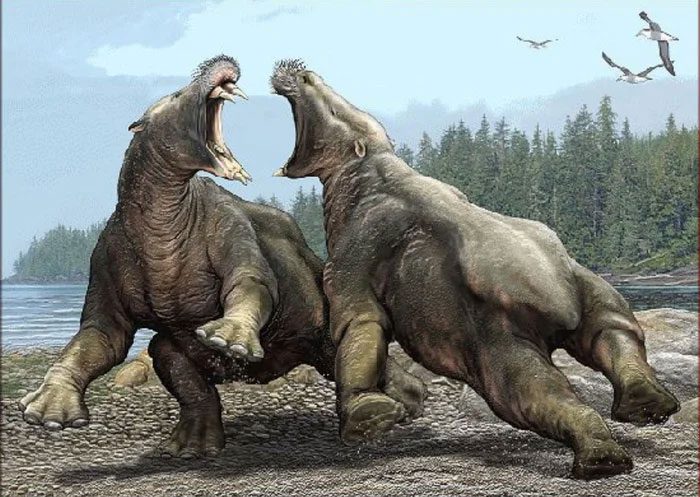
Desmostylus – a prehistoric hippopotamus with razor-sharp canine teeth.
This ancient hippopotamus lived from the late Oligocene to the Miocene epoch, Desmostylus belonged to the family Desmostylidae, and there are no living descendants today, making it challenging to trace their complete history or understand their habits.
These hippopotamus-like creatures weighed up to 1.4 tons and measured nearly 3 meters in length but stood only about 1 meter tall. They also had short tails and extremely strong limbs with hooves at the end of each limb.
As Desmostylus was a marine mammal, it possessed features that allowed it to spend most of its time in water. For example, the bones of its lower limbs were fused to form a hard structure. This may have made walking on land difficult, but swimming would have been much easier.
One of the most striking features of this animal was its tusk-like teeth. They had tusks that pointed forward and functioned like canines. Many experts still wonder why these animals had such teeth.
They theorize that as herbivores, there was no reason for them to possess these canine teeth—typically, canines are used to kill and consume other animals.
However, some other experts believe that these teeth were used to protect them from attacks by other predatory animals. These canine-like teeth also existed in several other prehistoric animals, such as Gomphotherium, an elephant-like creature that lived during the Neogene period.
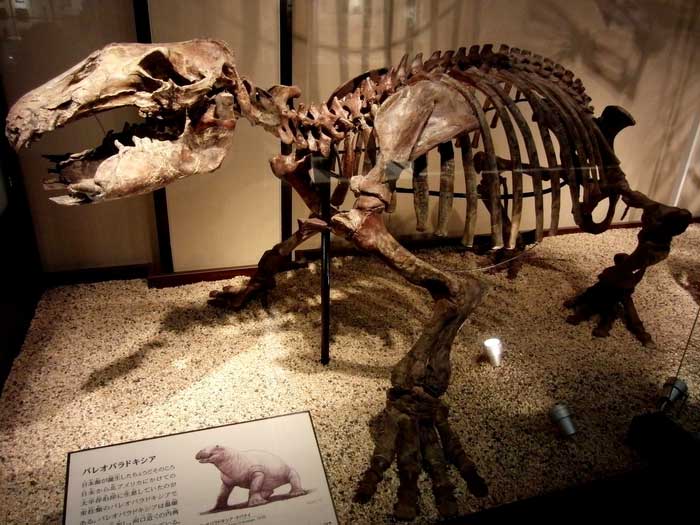
The skeleton of Desmostylus.
Desmostylus existed from the late Oligocene to the late Miocene, about 28.4 to 7.25 million years ago. This creature is believed to have existed for over 20 million years. Based on the locations where fossils have been found, it is thought to have lived in various places, including some regions of Japan in Asia and the Pacific Rim in North America.
Although these ancient hippopotamus-like creatures were believed to be semi-aquatic, evidence suggests they spent most of their time underwater and could dive deeply.
According to experts, these animals only spent time on land to rest, mate, or forage for food. Despite their resemblance to modern hippopotamuses, the lifestyle of Desmostylus likely resembled that of sea lions more closely.
Desmostylus clearly spent most of its life in shallow coastal waters. However, some recent discoveries also suggest that they could inhabit freshwater environments and estuaries.
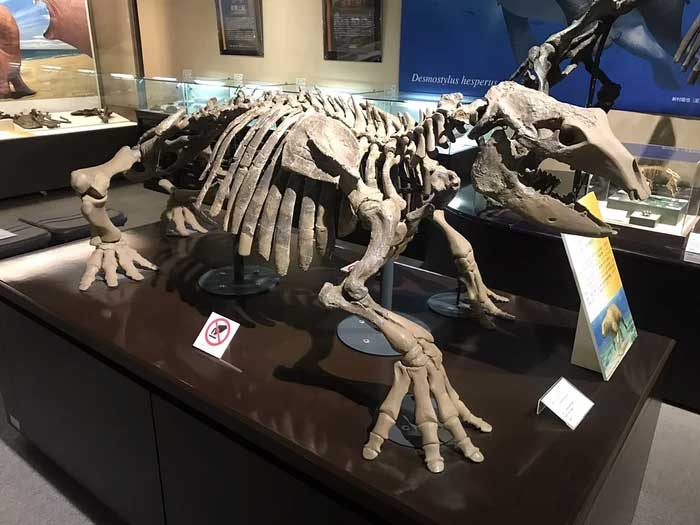
Desmostylus existed as a marine animal.
While the exact cause of this animal’s extinction remains unknown, experts suggest that changes to Desmostylus’s habitat may provide clues.
Desmostylus existed as a marine animal, spending most of its time near the coast. It is believed that the Miocene epoch was a period of formation and development of new mammalian species. Therefore, Desmostylus had to adapt and live in freshwater environments. This new competition, coupled with habitat changes, likely contributed to their extinction.
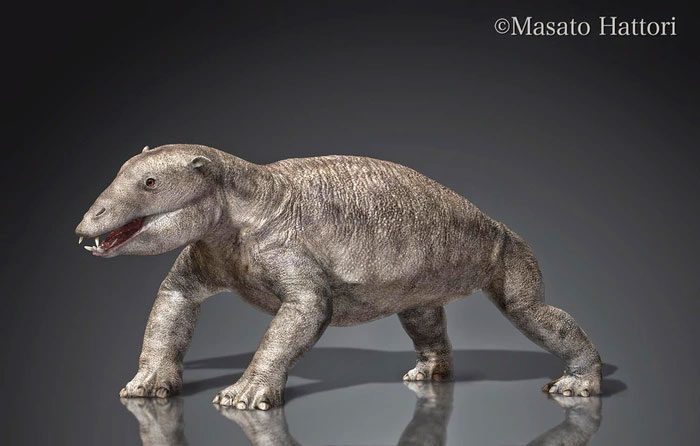
They had short tails and extremely strong limbs.
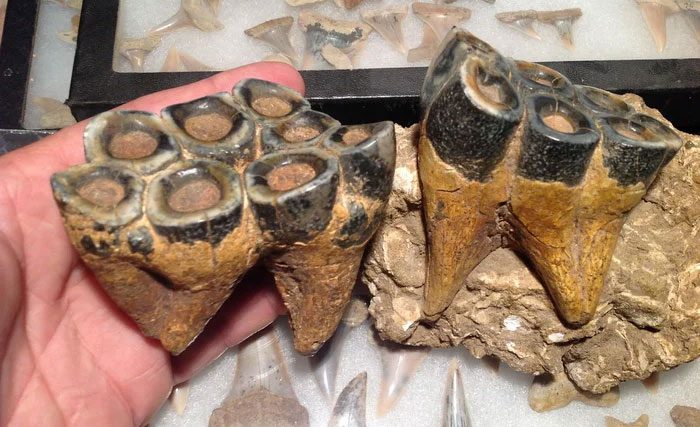
Desmostylus is believed to have been a herbivore, much like today’s hippopotamuses, but the exact plants that these animals consumed remain unknown.
However, many experts suggest that this giant creature fed on soft aquatic plants that could be found around its habitat.
Additionally, due to its unique dentition, it is believed that they may have also consumed deep-rooted plants. Moreover, the teeth in the lower jaw evolved into tusks that formed a shovel-like structure. Two tusk-like teeth also grew from the upper jaw.
There is very little information about the animals, especially predators, that lived at the same time as Desmostylus. But fossil analyses suggest that this animal was nearly defenseless, so it is very likely that its razor-sharp teeth were used for defense against predators.


















































